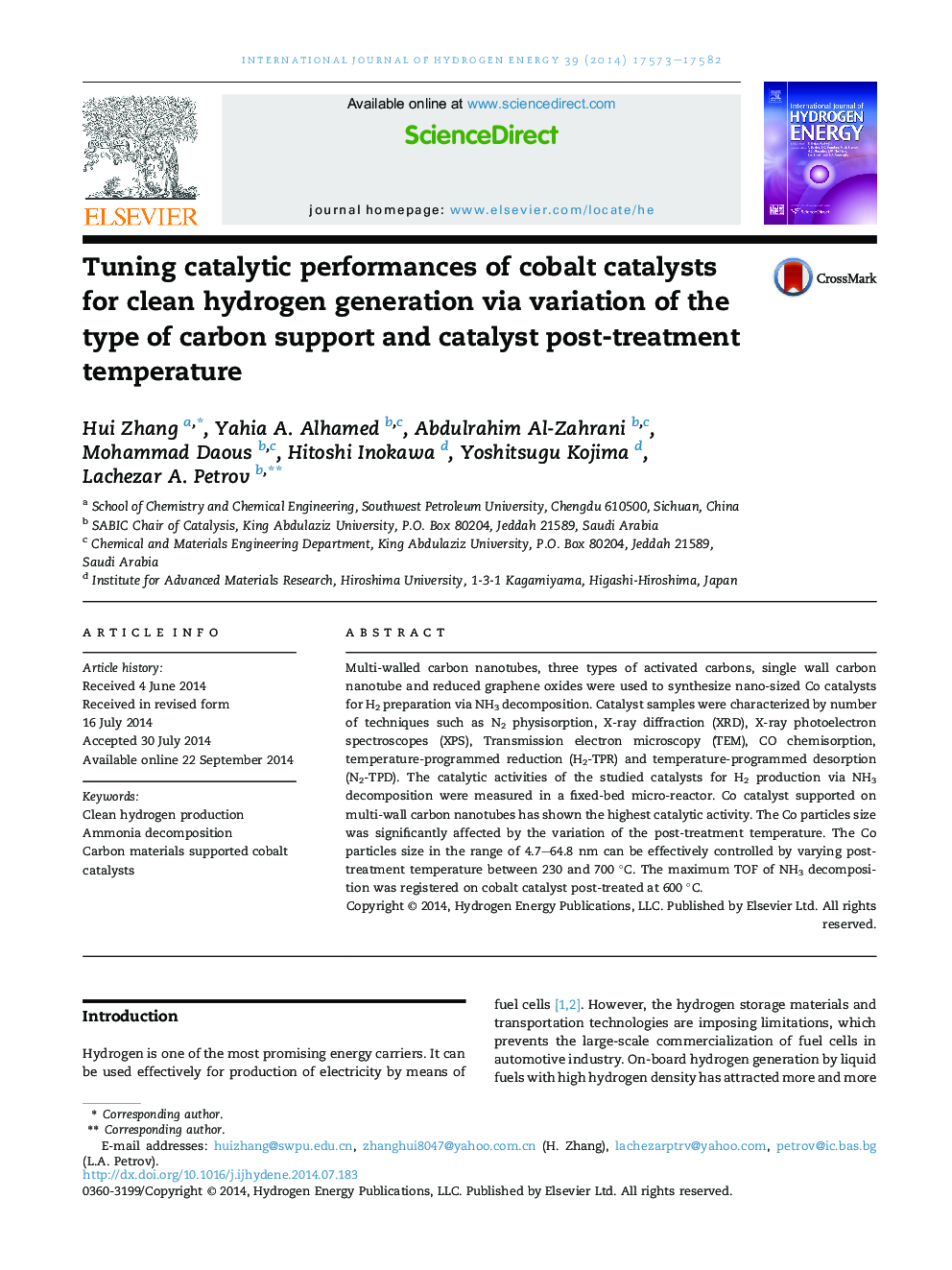| Article ID | Journal | Published Year | Pages | File Type |
|---|---|---|---|---|
| 1271853 | International Journal of Hydrogen Energy | 2014 | 10 Pages |
•Catalytic activity was much depended on the support properties of carbon materials.•Post-treatment temperature of catalysts has a great effect on cobalt particle size.•Cobalt catalyst supported on MWCNTs exhibited the best catalytic performance.
Multi-walled carbon nanotubes, three types of activated carbons, single wall carbon nanotube and reduced graphene oxides were used to synthesize nano-sized Co catalysts for H2 preparation via NH3 decomposition. Catalyst samples were characterized by number of techniques such as N2 physisorption, X-ray diffraction (XRD), X-ray photoelectron spectroscopes (XPS), Transmission electron microscopy (TEM), CO chemisorption, temperature-programmed reduction (H2-TPR) and temperature-programmed desorption (N2-TPD). The catalytic activities of the studied catalysts for H2 production via NH3 decomposition were measured in a fixed-bed micro-reactor. Co catalyst supported on multi-wall carbon nanotubes has shown the highest catalytic activity. The Co particles size was significantly affected by the variation of the post-treatment temperature. The Co particles size in the range of 4.7–64.8 nm can be effectively controlled by varying post-treatment temperature between 230 and 700 °C. The maximum TOF of NH3 decomposition was registered on cobalt catalyst post-treated at 600 °C.
Graphical abstractFigure optionsDownload full-size imageDownload as PowerPoint slide
